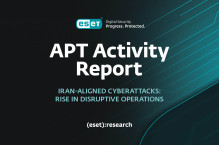In the past few weeks there have been many rumors about Rustock.C: many people have talked how hard it is to process, and many people have also complained about the uselessness of a replicant sample made publicly available (MD5 00430470e6754f082b6c2c19d022caea). Actually, I can definitely say that this sample is... very useful. With deep analysis we can obtain the proper decryption key within a few hours. In this short article I'll try to describe the whole protector:
- encryption
- compression
- imports rebuilding
- relocations handling
- anti-debug tricks
Layer L0
The Very first layer (L0) is rather easy, just a simple (probably polymorphic) decryptor without any magic ;-)
Layer L1
The proper protection layer (L1) starts immediately after the first decryptor. We can see complex flow obfuscation and the instructions are also obfuscated. It would be rather difficult to analyse it (statically or dynamically) without some kind of deobfuscation tool. I've started to write such a tool, and in fact it can handle the whole loader. Unfortunately, it is property of my company and it will stay private. The protected driver doesn't have an imports table: the functions required to obtain the base address of ntoskrnl.exe and to obtain addresses of imported functions are implemented by the author of the protector.
The following code is responsible for finding ntoskrnl in memory (a well known trick used by ring 3 packers).
seg000:00000261 mov eax, dword ptr fs:38
seg000:00000267 mov eax, [eax+4]
seg000:0000026D xor al, al
seg000:0000026F loc_26F:
seg000:0000026F sub eax, 100h
seg000:00000275 cmp word ptr [eax], 'ZM'
seg000:0000027A jnz loc_26F
seg000:00000280 mov bx, [eax+3Ch]
seg000:00000284
seg000:00000284 loc_284:
seg000:00000284 and ebx, 0FFFFh
seg000:0000028A cmp dword ptr [eax+ebx], 'EP'
seg000:00000291 jnz loc_26F
Imported functions are recognized by checksum value (another well known technique used by ring 3 packers). A checksum is calculated for each function with this simple algorithm:
DWORD importCRC(char* impName)
{
int i = 0;
DWORD res = 0;
while (impName[i])
{
res ^= impName[i];
res = ROL(res, impName[i]);
i++;
}
return res;
}
In fact, layer L1 uses two functions:
CRC - Function Name
--------------------------------------
9530E67B - NtQuerySystemInformation
E84C9117 - ExAllocatePoolWithQuotaTag
NtQuerySystemInformation is used with SystemModuleInformation to obtain the base of the second module on the ModuleList (this value will be used during imports rebuilding):
seg000:000002B5 lea esi, [ebp+var_400]
seg000:000002BB push 0
seg000:000002C0 push 400h
seg000:000002C5 push esi
seg000:000002C6 push 0Bh ; SystemModuleInformation
seg000:000002CB call eax ; NtQuerySystemInformation
seg000:000002CD mov eax, [esi+128h]
Layer L1 is responsible only for searching the kernel in memory, allocating new memory and copying almost the entire body of the rootkit to the new memory buffer.
Layer L2
This is the last layer, it is responsible for decryption, decompression, imports rebuilding and relocation handling. The whole protection scheme is based on this encrypted structure:
0. 335CB51A -> 6604D5BF -> 00000000 - third part of encryption key
1. 37E5B20D -> 660095BF -> 00044000 - size of module in memory
2. 18CC8110 -> 6604D5BA -> 00000005 - number of sections
3. 8C0C7587 -> 6604D5EF -> 00000050 - relative address of relocations
4. 4FAEFB07 -> 7ECA0C70 -> 18CED9CF - relocations encryption key
5. 988E29AD -> 6604F403 -> 000021BC - number of relocations
6. 3701ACDF -> 660452FF -> 00008740 - relative address of imports
7. 35EE9C52 -> 72E26C3B -> 14E6B984 - imports encryption key
8. 88003930 -> 6604D5C8 -> 00000077 - number of imported functions
9. 6A47721F -> 6605D434 -> 0001018B - original driver entry point
10. F89490DA -> 6604C5BF -> 00001000 - relative address of first section (in new buffer)
11. FAED6BA6 -> 66045ED0 -> 00008B6F - address of encrypted and packed first section data
12. A8ECFD9A -> 6604F5BF -> 00002000
13. A64AE790 -> 66045EC7 -> 00008B78 / 2nd section
14. 6E24D95A -> 6604E5BF -> 00003000
15. 57C6BEA1 -> 66045E5D -> 00008BE2 / 3rd section
16. 6C3C441A -> 660495BF -> 00004000
17. 69CA0D61 -> 66045884 -> 00008D3B / 4th section
18. A11CB31A -> 660455BF -> 00008000
19. 98E85CEE -> 66046BBD -> 0000BE02 / 5th section
Firstly, we can see a memory allocation of 0x44000 bytes (step 1). The next important step will be to calculate the decryption key. Our key is constructed from three dwords: the first two dwords are collected from the PCI bus, and the third dword, 0x6604D5BF we already have step 0). Data gathered from PCI bus can be identified as the DeviceID and VendorID for two devices.
seg000:00000808 cmp eax, 60000h
...
{ 0x06, 0x00, 0x00, "Bridge Device", "Host/PCI", "" }
So the first value is Host/PCI Bridge:
seg000:00000852 cmp eax, 60100h
seg000:00000857 jz loc_875
seg000:0000085D cmp eax, 68000h
seg000:00000862 jz loc_875
...
{ 0x06, 0x01, 0x00, "Bridge Device", "PCI/ISA", "" }
{ 0x06, 0x80, 0x00, "Bridge Device", "Other", "" }
The second value is PCI/ISA Bridge or any other bridge if we don't have PCI/ISA. The full decryption key will have the following format:
0xDDDDVVVV 0xDDDDVVVV 0x6604D5BF
DDDD - Device ID
VVVV - Vendor ID
We can use brute force to get those values, because the list of VendorID (popular) is very short. Ok, but how ? Ripping obfuscated code is not a good idea. With a deobfuscator it is much easier, because after deobfuscation I recognized the encryption and compression algorithms. Data are encrypted with RC4 and compressed with aPlib. Essentially, decompression/decryption looks like this:
RC4_Init(key);
for (int j = 0; j < 111; j++) RC4_round(); //"empty" rounds
DWORD futureKey = 0;
for (int j = 0; j < 4; j++)
{
futureKey <<= 8;
futureKey |= rc4_round();
}
RC4_Decrypt(encryptedData);
aP_decompress(encryptedData);
There are 111 "empty" RC4 rounds, probably to slow a brute force analysis. As you probably noticed, I'm calculating the futureKey dword: this dword will be used to decrypt the relocations table and imports table. Full brute force will require calling aP_decompress for every combination, which is not such a pleasant idea, since aP_decompress can be returned without error but the stream will not be uncompressed correctly. I'll tell you later why we don't even need to touch decompression.
Relocations
The relocation table is represented as a table of offsets. Each dword represents one relocation.
Decryption of the relocation table looks like this:
seg000:0000064B mov eax, [edx] ; ebx = 18CED9CF (pos 4.)
seg000:0000064B ; dr3 = futureKey
seg000:0000064B ; edx = input table address
seg000:0000064B ; edi = destination addr
seg000:0000064D xor eax, ebx
seg000:0000064F add [eax+edi], edi
seg000:00000652 add ebx, 9E72DEBFh
seg000:00000658 mov eax, dr3
seg000:0000065B add ebx, eax
seg000:0000065D add edx, 4
seg000:00000663 sub ecx, 1
seg000:00000669 jnz loc_64B
We need the real futureKey to decrypt relocations. Basically, this is the weakness that we are looking for by brute force, because we can initially guess just futureKey and check which futureKey will gave us the proper relocation table. Now, using RC4 brute force analysis we can simply check futureKey and call just aPlib for the proper futureKey value.
Imports
Imports are encrypted in a similar way to relocations. Each imported function is represented as a 9 byte structure:
struct import
{
DWORD relativeAddress;
DWORD checksum;
BYTE unknown;
}
decryption algorithm:
DWORD iKey = 0x14E6B984; //pos 7.
for (int i = 0; i < importsNum; i++)
{
DWORD crc = (imps[i].relativeAddress ^ iKey);
DWORD addr = (imps[i].checksum ^ iKey);
BYTE ch = imps[i].unknown ^ iKey ^ 0x4A;
iKey += 0x33013EAB;
iKey += futureKey;
}
To rebuild the imports table we need to match checksum values with the names of functions. For example:
ADDR: 0000301C CRC: 60AEF620, ch: 00 : ZwClose
ADDR: 00003020 CRC: FCBFB9EE, ch: 00 : IoFreeIrp
ADDR: 00003024 CRC: AB5B52D1, ch: 00 : ObfDereferenceObject
ADDR: 00003028 CRC: 4D509D0A, ch: 00 : SeDeleteAccessState
ADDR: 0000302C CRC: 74CBCD2E, ch: 00 : RtlCopyUnicodeString
ADDR: 00003030 CRC: 55C959AD, ch: 00 : SeSetAccessStateGenericMapping
ADDR: 00003034 CRC: 2A65D334, ch: 00 : RtlMapGenericMask
ADDR: 00003038 CRC: 8C07F30E, ch: 00 : SeCreateAccessState
ADDR: 0000303C CRC: 1F8A8321, ch: 00 : KeGetCurrentThread
ADDR: 00003040 CRC: 76A48118, ch: 00 : ObfReferenceObject
Because almost the entire analysis was done statically, I missed some "tricks" during the rebuilding of the imports.
Anti Debug
- clearing debug registers
seg000:000000E2 mov eax, 0
seg000:000000E7 mov dr1, eax
seg000:000000EA mov dr2, eax
seg000:000000ED mov dr3, eax
seg000:000000F0 mov dr7, eax
- IDT modification - this looks like a way of detecting a virtual machine (I don't know exactly how it works, because I don't usually work in ring 0)
END
That's it. I won't present the original decryption key, but brute-forcing those values is rather easily done and at most 10 hours (if we strike lucky during VendorID selection, it can be done in 4 hours). Thanks for reading.
Lukasz Kwiatek
Developer




